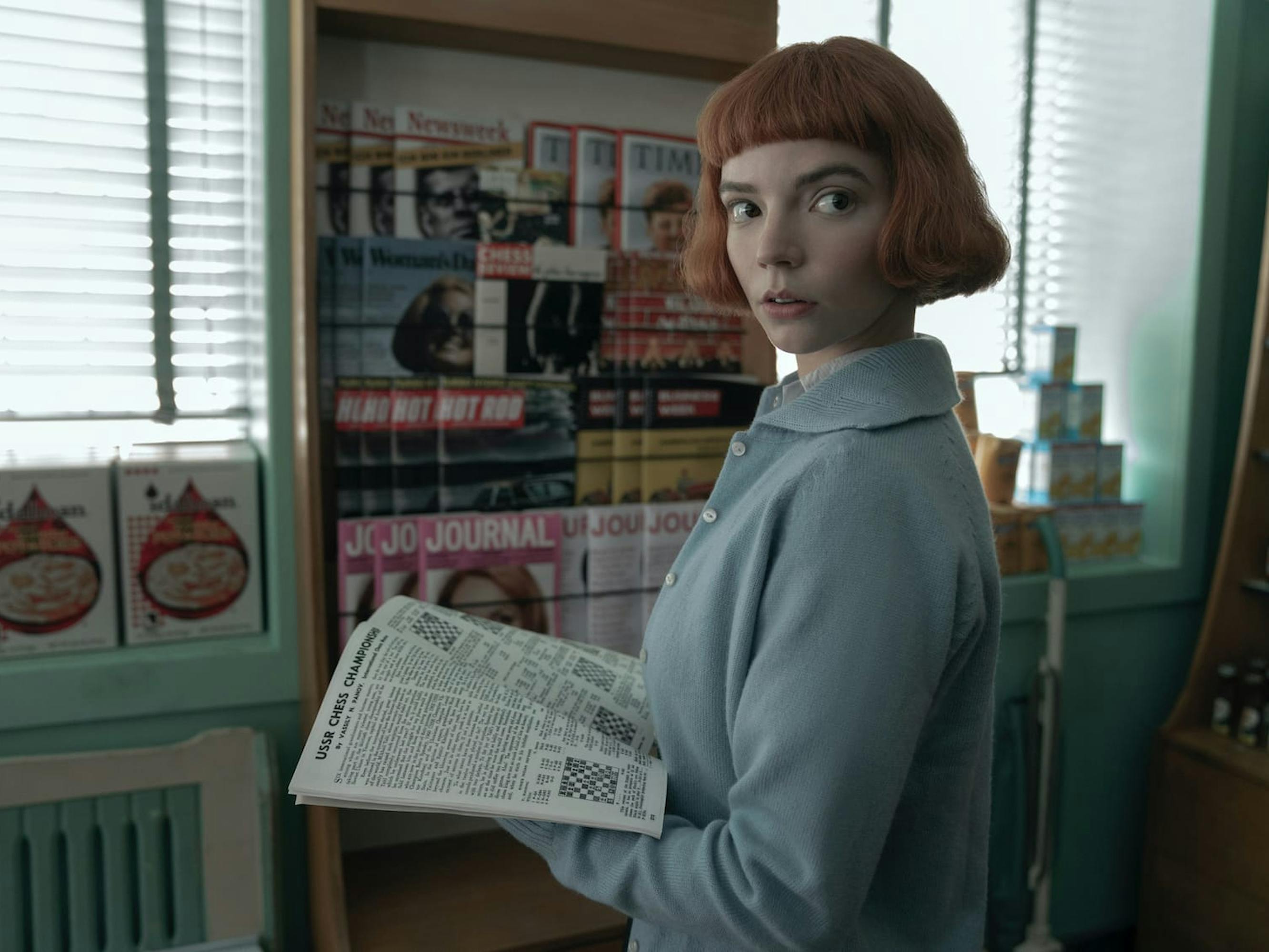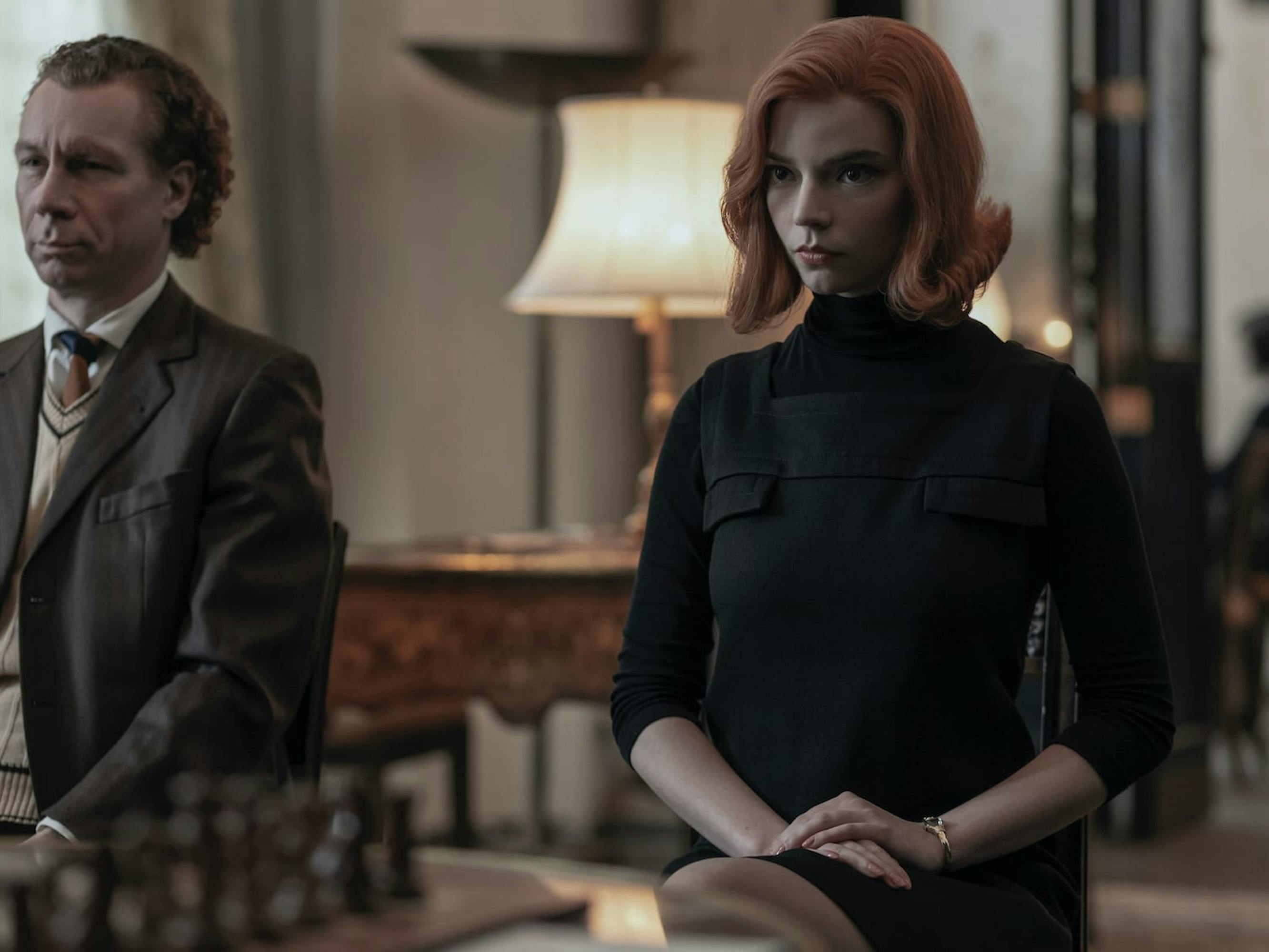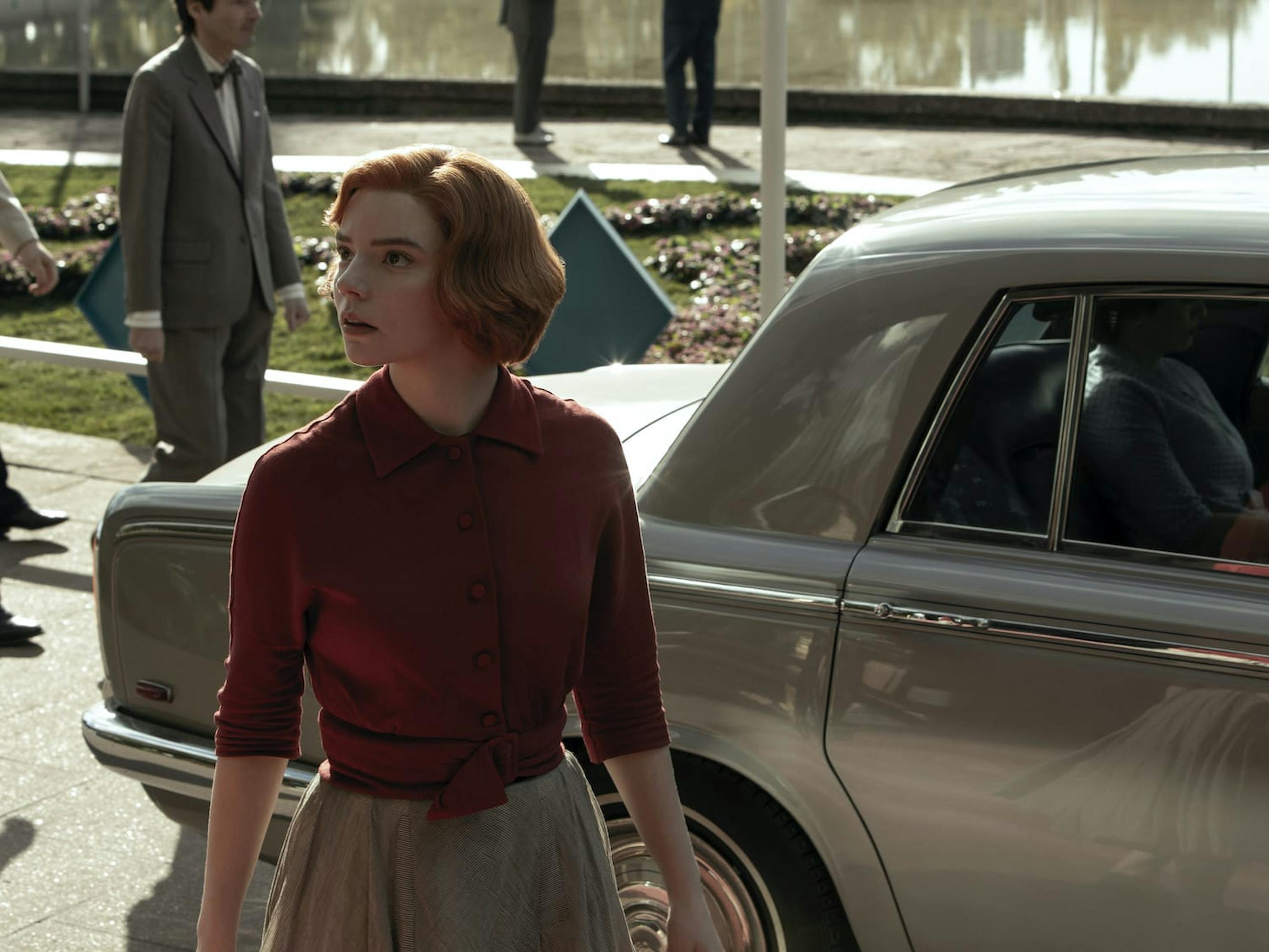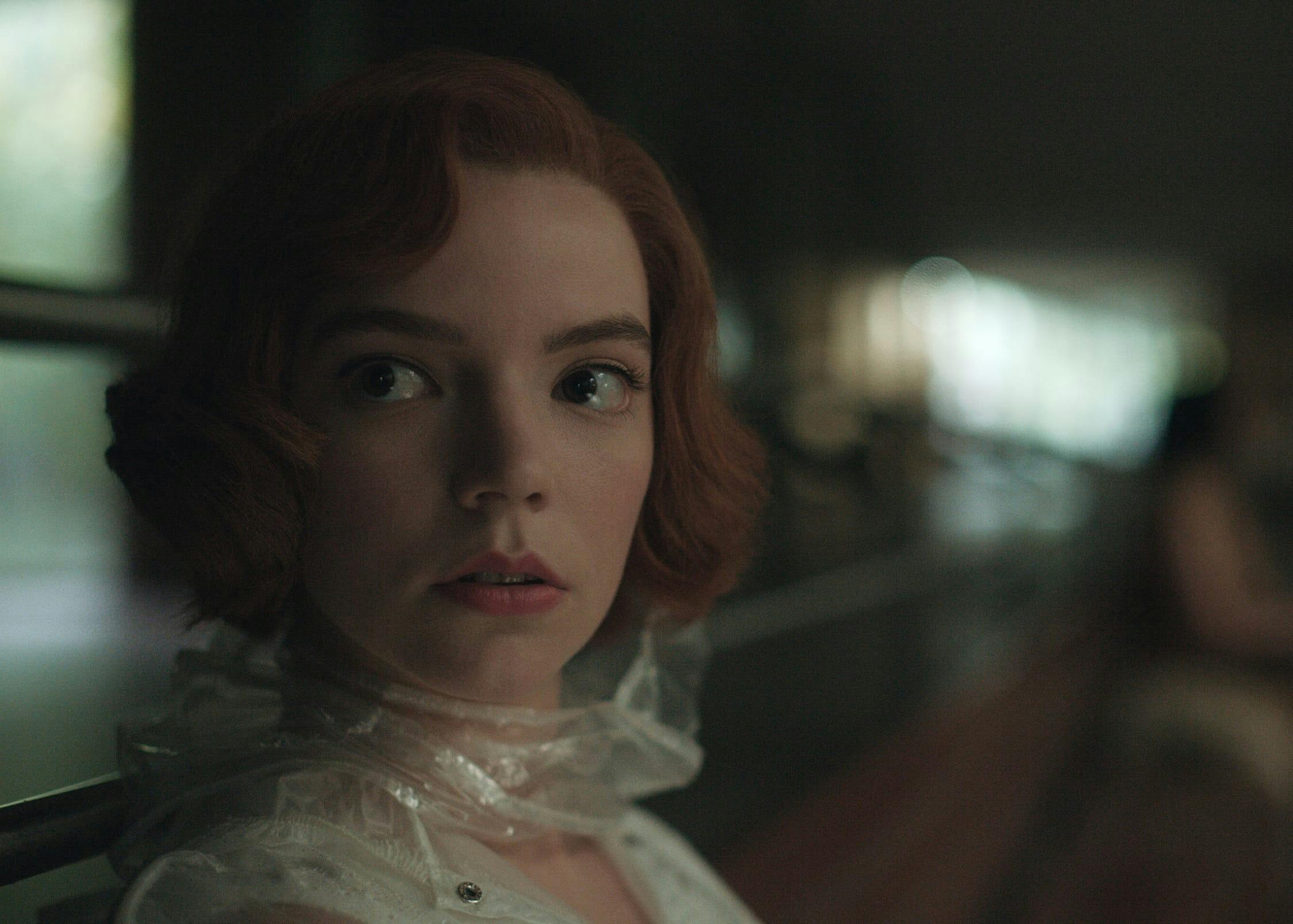When Scott Frank accepted the Critics Choice award for Best Limited Series for The Queen’s Gambit this year, he thanked “the face that launched a million new chess players.” That face belongs to lead actress Anya Taylor-Joy, who plays chess prodigy Beth Harmon, but it was hair and makeup artist Daniel Parker who created her inspiring looks every day on set. Over the past 40 years, Parker has brought audiences memorable characters through his work on titles such as Robin Hood: Prince of Thieves, Band of Brothers, and Mary Shelley’s Frankenstein (for which he picked up an Academy-Award nomination).
Parker is now up for an Emmy in Outstanding Period and/or Character Makeup for his expression of 50s and 60s makeup in The Queen’s Gambit. Here, Parker dives into the precision and process of creating the alluring look that captivated audiences and which Frank credits with rescuing dusty old chess sets from the backs of closets around the world.

Queue: What was it about makeup that piqued your interest?
Daniel Parker: Well, I’ve actually always done makeup, ever since I was a little kid. My father was a very famous makeup artist. He did films like Ben-Hur, which is where he met my mother — I’m the result of the chariot race. He did Quo Vadis, Lawrence of Arabia... I mean, he did all the big movies. He was a brilliant, brilliant man. I always used to play around with makeup. I used to stick beards on my friends, give them cuts. Then I moved up a level and started doing the school plays, to avoid being in them, mostly. My parents didn’t want me to do makeup when I said I wanted to go into movies, so I started off in production, but then soon found myself back in the wacky world of makeup. I was asked to do makeup effects for Return of the Jedi. I thought I’d do it for one film, just for fun. And I’ve done it ever since.
How would you describe the job that you do?
DP: First, I’m presented with the scripts and I’m asked if I’m interested in doing it. The scripts on The Queen’s Gambit are fabulous. The story’s fabulous. It all takes place in the 1950s and 60s, and it’s a wonderful period for makeup and hair. It also takes the lead character through a period of 10 years, from being very young through to being in her twenties. Big changes are happening in her life. So the interesting thing is: How do you design the makeup so that you get the same person looking like a kid who later becomes an adult? That challenge was one of the things that made this job exciting, and doing period work is always exciting. It’s difficult to get it looking right and get it looking real.
How did you decide on Beth’s look?
DP: When I first read the script, I had in my mind that Beth was a redhead, just from the character that she is within the script. Funny enough, Anya also felt this. As her character goes through her journey, she plays a lot with the makeup because she’s up and down — alcohol, drugs, tiredness, elation, and glamor all encompass this character. And so, of course, the makeup and hair do a lot for that.

How did you age Beth through the episodes?
DP: The younger the character, the less makeup. When she’s a girl, her haircuts are younger and she’s less looked after. Then she goes up a stage, and she discovers makeup, so we start off with a little bit of lipstick, a little bit of blush, and a little bit of brown mascara. But the other things are little tricks; for example, I give her individual eyelashes. The older she gets, the more of these eyelashes she gets, so her eyes become sexier.
You slowly add and add until she actually becomes more mature. They’re very, very small adjustments, and they’re not in your face until you start seeing her older. Then, the black eyeliner goes on, you definitely see rouge, and you definitely see lipstick. Only then do you see it.

What was the most challenging part of the series?
DP: I think the biggest challenge is the amount of characters, all in different periods. As a designer, it’s, Oh, my God, another one! I’ve got to make them look different. I’ve got to make this person look different to that person. You’ve got 20 people in a room, and they all have to look different, but the same. You have to constantly come up with these new ideas for basically baking the same loaf of bread. You have to find a new seed to put on top, or whatever it takes. That’s very difficult for a project like this because there are over 150 cast members, which is enormous. So all of those actors have to have a different look. On top of that, you have hundreds of extras, who all have to have a different period look. But that’s the job, and that’s what you take on, and what makes it interesting is that it’s challenging.
Were there any real-life inspirations that you took for Beth’s look?
DP: Yes. Beth is played by three actresses. The early, early look was taken from some beautiful old photographs I found of these very cute little girls with fringe. I wanted that short hair and this very tight fringe because I wanted to show a kind of strictness and a weirdness in her life because of her mother, and that included the fact that her mother would just go snip across her forehead. There was a lack of care because of her mother’s mental state. Then, as she was beginning to mature, I wanted to slowly soften her hair. I found another photograph of a very pretty girl with this slightly shorter hair but the fringe had grown out a bit fluffier and cuter. Later, the influence was actually some photographs of Natalie Wood — that’s Beth at her most mature, looking amazing.
The moment you have a backstory for a character, you can create the makeup and the hair.
Daniel Parker
What do you think hair and makeup tells us about an era or a culture?
DP: Makeup and hair can tell us everything about a culture, an era. It’s such a statement. You can go back to the Egyptians, the Romans. If you see the hair and the makeup, you know where they are. At the end of the day, the costume is important and the set is important, but when there’s a close up shot, it’s still got to be able to tell you something. The makeup’s got to be able to tell you a story. One of the things I do with every character, even if the actor’s only coming in for one day to play a part, I’ll ask, “Where’d you come from? Where’s your family?” But not asking the actor, asking the character. The moment you have a backstory for a character, you can create the makeup and the hair.

How did you interpret the differences between cultures as Beth travels around the world?
DP: Different cultures and geographies dictate how characters look. We travel to Mexico, Ohio, Kentucky, Moscow, Paris, and New York. With makeup, it was a question of looking at the culture of these places, at the times we’re shooting. In Kentucky, we’re shooting in the 1950s. With New York, we’re shooting in the late 60s, so I’ve gone with the beatnik side of the city, the more hip side. Then you’ve got Paris; they’re a little bit more quirky.
Everybody has to look like where they come from, and in that time period. And there could be tiny differences between characters’ looks, but if you don’t make those distinctions, it’s just not going to work. It all becomes flat. For example, even though it’s the 60s, there might be someone older who’s still dressed like it’s 1954, with hair from 1954. So it is very, very important to pay attention to when and where a character is from. The differences make it rich and interesting. Periods should be stuck to, but not rigidly, because then you end up with something that’s too much of the same.
How would you compare the makeup from today with the makeup in The Queen’s Gambit?
DP: Makeup today versus makeup in the 50s and 60s is completely different. My mother, for instance, always had the little compact that opens for powdering the nose. Always lipstick, mascara, eyeliner, powder, and maybe a bit of rouge. This was bog standard, for just about everybody.
Nowadays, you get certain people that maybe put these deep eyebrows on or do a lot of makeup. But you don’t get that everywhere, whereas in the 40s, 50s, and 60s, there were looks that were pretty generalized, and very gorgeous, too. I think people care less about makeup now. They’ll just go out in the street. You know, nowadays, some men won’t shave. In the 50s, a man not shaving was a down-and-out. A man with a tattoo? Probably a criminal or possibly a sailor in the 50s. It all changes all the time, which keeps my work very interesting. I can put somebody into a period very quickly by just doing a few things to them — it’s, bang, and they’re there.
